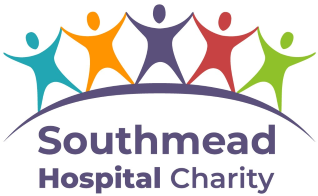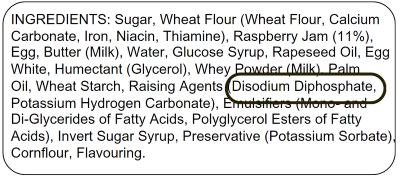Please read this information carefully before coming in for your actigraphy leading into an overnight polysomnography.
What is an actigraphy?
Actigraphy is a non-invasive way to find out your sleep patterns by monitoring your rest and activity cycles over 1 or two weeks.
Why have an actigraphy?
If you are having problems with your sleep such as irregular sleep and wake times, or excessive sleepiness, you may be referred for an actigraphy test.
What happens during an actigraphy?
Actigraphy monitors movement over days or weeks in real life situations. It involves wearing a device like a watch which has an accelerometer that detects movements.
You will wear the watch on your wrist at all times for around 2 weeks and complete a diary sheet of your daily activities and sleep times. You must only remove the watch when you shower, bathe, or wash and then log this on the diary sheet. It is important that you remember to re-attach the watch after this.
You will press a button on the watch when you go to bed and when you wake up. This will be fully explained to you by the clinical neurophysiologist at your initial appointment. During this appointment, you will be given some diary sheets to write down your daily activities whilst wearing the watch.
After you have completed your period of actigraphy you must return the watch in person at the time specified in your letter. These watches are in high demand for use by other patients and failure to return at the specified time may result in the cancellation of other patient’s appointments.
Preparing for the test
- You can eat and drink as normal before the test.
- Please follow the guidance provided by your consultant neuropsychiatrist about reducing or stopping medications before coming for the test. This information should be in the clinic letter following your appointment. Please call 0117 414 1048 or 0117 414 0452 if you have any concerns or questions.
- You will be asked if you understand this information and whether you consent to the test before we start. You are welcome to ask the neurophysiologist doing the test to give you any further information or to explain more about the procedures.
- Your appointment should take around 10-15 minutes.
What is a polysomnography?
Polysomnography (also known as sleep studies) is a test used to diagnose sleep disorders. Electrodes and sensors are placed on the body and head to record different information that allows your sleep to be studied in detail for 1 or 2 nights. A video recording is taken during the study to help diagnose your sleep problem.
Why do a polysomnography?
The main reason is to try to classify (work out exactly) the problem you are having with your sleep so that the referring doctors can treat it more effectively.
What happens during the test?
Small discs (electrodes) are applied to your scalp, around your eyes, and under your chin. These will be attached with special glue, so they do not fall off in your sleep.
2 belts will be placed around your chest and abdomen (tummy) that measure your breathing, with additional boxes attached where the wires are connected. A nasal cannula will rest in your nose to also measure breathing.
2 sticky pads will be placed: 1 on your shoulder and 1 on your hip to detect your heart rate. A pulse oximeter will be placed on your finger to detect blood oxygen saturation. A movement sensor is placed on your arm and 1 on each of your legs to detect any movements in your sleep.
The equipment will stay in place until the end of the test, and it is removed by a neurophysiologist.
The night-time recording is started as close to your normal sleep time as possible. Wake time is usually before breakfast at around 08:30.
It may be necessary to do a Multiple Sleep Latency Test (MSLT). This involves settling down to sleep at specific sections of the day. These periods are about 20-40 minutes and are about 2 hours apart. You will be woken up at the appropriate time by your neurophysiologist.
Preparation for the test
Follow these instructions carefully for the MSLT
- Do not consume any alcohol, coffee, or stimulating drugs (medication) the night before or morning of the test.
- Stop smoking at least 30 minutes before each test.
- Do not doze off in-between the test sessions.
General preparation for polysomnography
- Please follow the guidance provided by your consultant neuropsychiatrist about reducing or stopping medications before coming for the test. This information should be in the clinic letter following your appointment. Please call 0117 414 1048 or 0117 414 0452 if you have any concerns or questions.
- You must arrive with clean, dry hair with no grease, gel, wax, or other hair products.
- You will be set up in the clothes you sleep in, and won’t be able to change during the test. Please make sure you bring suitable nightwear such as shorts, pyjamas, t-shirt, or tracksuit bottoms. Nighties are not suitable.
How long until I get my results?
The results will be sent to your GP/consultant. You will not receive any results during the test. Your consultant may send you a letter with the results or see you again for a follow-up appointment. Please note, results are not sent directly to you.
Are there any side-effects?
You will not feel anything during or after the recording. The machine records the normal natural activity seen during your sleep. After the equipment is removed, great care will be taken to remove as much of the glue as possible from your hair. Applying a hair conditioner and combing through your hair before having a shower or bath will help soften any glue left.
Contact details
This information is intended as a guideline only. If you have any further questions about your test (excluding about results) please contact the department on the numbers below and a member of staff will be happy to help.
0117 414 1048
0117 414 1050
Your responsibility as a patient
Outpatient services at North Bristol NHS Trust are in great demand. Even so, every week an average of 600 patients fail to attend, which wastes appointments. Please tell us with as much notice as possible if you no longer need your appointment and we can allocate this to another patient.
What if I am unwell or need to change my appointment?
If you have an infectious condition, such as COVID-19, measles, mumps, chickenpox, flu, stomach upset, have head lice, or are unable to attend your appointment for any other reason, please let us know with as much notice as possible so that your appointment can be rescheduled and offered to someone else.
If you want to change the appointment for a second time, we cannot offer you another date unless there are exceptional circumstances.
What if I don’t attend?
We will assume that you no longer require your appointment, and we will not offer you another one. We will write to the consultant/doctor who referred you and inform them that you did not attend.
© North Bristol NHS Trust. This edition published December 2024. Review due December 2027. NBT003749



